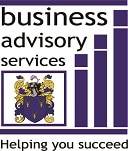If you want to do well as a small business owner, it would help you if you could understand the basics of how to read a balance sheet. The balance sheet is an indispensable part of a business accounting information and is essentially a snapshot of a company at a specific point in time.
The balance sheet lets you know what a company owns (“assets”) and what it owes (“liabilities”). It will also tell you how much the business is worth.
The company’s assets can normally be divided into current assets and non-current assets. Current assets have a high liquidity value and can be turned into cash quickly. Some examples of current assets which are stated in a balance sheet are cash, accounts receivable (also called debtors), and inventory.
Non-current assets, on the other hand, cannot be easily converted into cash. Some examples of non-current assets are machinery, buildings, or real estate.
The company’s liabilities can also be divided into current and long-term liabilities. Current liabilities are debts that the company must pay back in less than a year. Some examples are accounts payable and 12 months of interest payments on longer-term loans. Long-term liabilities are debts that are due after a minimum of one year.
Shareholder’s equity is made up of the money that was invested into the business at its start and retained earnings. Retained earnings are profits that are not paid out to the company’s owners but are re-invested into the company. Shareholder’s equity is the company’s net worth.
So now that you understand the basic components of the balance sheet, let’s take a look at what types of analysis can be generated from it.
The information in a balance sheet is used to generate many different types of financial ratios. Though we will not get into the mechanics of these ratios in this article, it is important that you understand that they are used to gain insight into many diverse aspects of the business.
Debt-to-equity ratios, for example, will show how extensively the company relies on debt to finance its growth. Financial strength ratios will tell you how good the company is at repaying its debts.
In conclusion, the balance sheet’s purpose is to let you know the business’ financial health and liquidity at a selected point in time.
Investors and lenders prefer that the current assets of a company are higher than the current liabilities because it means the company will remain solvent in the immediate term. Cash shortages are then unlikely and the company will not have to rely on additional funding to meet its obligations.
If you dig a little deeper into the types of analysis that can be done with balance sheet items, you just might be fascinated. With a little basic knowledge, you’ll impress you bank manager and even your accountant!
If you are interested in learning more about how to measure the health of a company, read my article called the “Top 5 Warning Signs that your Business is Declining”.
